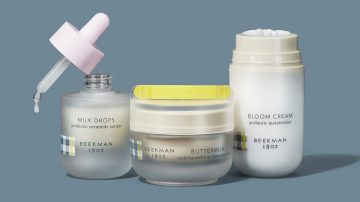As the world of e-commerce continues to grow, hitting $517.36 billion in U.S. sales in 2018, and digitally native, millennial and Get Z customers increasingly spend their money online, fashion retailers are finding new ways to drive conversion rates. For many, buy-now-pay-later services from companies such as Sezzle and Afterpay are helping win over younger shoppers.
On Monday, payment company Sezzle announced its foray into the Canadian market. The company teamed with apparel brand Kappa Sportswear as its launch partner, helping the apparel brand drive sales to its growing direct-to-consumer business — Sezzle promoted the partnership via its Instagram.
“Kappa was really the perfect launch partner for us, because not only were they expanding their direct-to-consumer operations into Canada, but their consumer is really the perfect consumer demographic for our product. Our product skews very heavily under 35, and Kappa is a premium brand with young consumers,” said Paul Paradis, co-founder and chief revenue officer at Sezzle.
“Our consumers want alternative ways to pay, they want alternative ways to shop, they want alternative ways to live their lives. It enables our consumers to be a little more carefree and less apprehensive,” said Devan Welch, head of marketing for Kappa Canada. Welch said the brand looked closely at its core customer demographics to figure out areas it could improve. For younger shoppers, reports suggested that technology and frictionless payments were key areas to focus on.
In the last few years, the Italian-based apparel brand has seen explosive growth globally, driven by its adoption into streetwear culture, said Welch. As a result, Kappa Canada has been ramping up its direct-to-consumer business. The audience for the brand, he said, ranges from age 17 to 35, and many of its younger customers were eager to try the buy-now-pay-later tool after learning about the Sezzle integration.
“We’re a little bit elevated in the pricing model in our industry, but it hasn’t slowed sales. We’ve seen through research that it’s not a hard sell to pitch our product, but some people want to be more financially aware,” said Welch. “When you’re 20 or 21, you’re in your first apartment, money is a big deal. It’s all about what you have in your pocket now and what you’re going to have with your next paycheck. This really enables shoppers to live their lives without thinking they can’t afford it this week.”
By working with Sezzle, retail partners offer customers the option to not pay the full amount for their order right away. Instead, the shoppers can opt for four interest-free payments, the first being due upon completing the order. The following payments are scheduled in two-week increments. If a customer doesn’t pay an installment on time, they’re blocked from using Sezzle when shopping the brand shopped, as well as Sezzle’s other retail partners, until they pay it off. Sezzle also charge a $10 late fee for all late payments, but makes the bulk of its revenue from merchant transaction fees. It’s meant to help younger shoppers avoid falling into a ton of debt that they might rack up with a credit card, Paradis said.
The company works with a wide range of fashion brands, including Tobi, Boyish Jeans and Necessary Clothing. At the end of the first quarter, Sezzle reported working with over 3,000 merchant partners in the U.S., with 250,000-plus active shoppers using the platform.
Because this model is so new in Canada, Welch said he and his team are working hard to spread the word to shoppers through its digital channels. The brand is promoting the buy-now-pay-later offering via its social media channels, paid digital ads and email marketing to existing customers.
While Sezzle makes its way into Canada as the first buy-now-pay-later service in the market, other companies are popping up in the U.S. and worldwide as retailers look for new ways to make the customer’s life easier and, of course, drive sales.
Australia-based payment-flexibility company Afterpay launched in the U.S. in May 2018, working with Urban Outfitters, Free People and Anthropologie, among others at the time of launch. In the last 11 months, ending May 31, 2019, Afterpay’s sales in the U.S. hit approximately $780 million, said a spokesperson for the brand. Within one year, Afterpay had brought on 3,300 retailers in the U.S., including Revolve, Reformation and Levi’s, and it reported that 1 million U.S. customers had used the platform. Nick Molnar, founder and CEO of Afterpay, said in a recent statement that the Afterpay service had helped increase conversion rates and incremental sales for retailers by 20-30%.




